You’ve found some nuggets with your metal detector. You finally retrieve them from the ground. You can see they’re gold, but they don’t look very shiny! They’re covered in clay, mud, soil, perhaps with bits of quartz still sticking to them. Maybe it’s even covered in ironstone, the famed ‘black gold’! How do you go about cleaning gold nuggets to make them look as good and shiny as they can?
It depends on where the nugget was found and what’s making it dirty. Also, if you plan to sell the nugget in the future, keep in mind that some collectors like nuggets to be in as pristine condition as possible, even dirty.
Methods of cleaning gold nuggets
Basic clean: toothbrush and warm water
If your nugget was dug from fairly clean ground, and it’s a rounded alluvial nugget, then all you might need is warm water and a bit of scrubbing with a soft toothbrush. I often put water and a drop of dishwashing detergent in the nugget jar that I carry in my pocket while detecting. This way they’ve been soaking in soapy water for a few hours by the time I get home to give them a scrub with the toothbrush.
Loosening stubborn dirt: ultrasonic cleaner
A good way to loosen stubborn clay and plain soil grime is with an ultrasonic cleaner. It doesn’t etch them clean like the following methods, but it does a great job of cleaning them mechanically. The main disadvantage is that ultrasonic cleaning isn’t cheap, so it’s hardly worth your while unless you already have access to one. After using you might find that your nuggets are stained anyway, and need a more intense clean.
Deeper clean for somewhat dirty gold: salt and vinegar
Salt and vinegar supposedly combine to give nuggets a decent clean, but they work especially well with small alluvial bits. Put some table salt and vinegar in the bottom of a jar and add your nuggets. shake them gently for a while. Put them in your pocket and carry them around for a while so they rub gently among themselves. Watch out for pressure that might build up. I’ve never personally used this method for cleaning gold nuggets, but it has a good reputation. I’d be a bit wary of the salt being too abrasive for cleaning gold nuggets, gold is a pretty soft metal.
Ironstone and encrusted sandy clay: hydrochloric acid
Over time, and particularly on the west coast, I’ve detected several nuggets that are stained black, or completely coated in black ironstone. Others are coated in crusted, iron-stained sandy clay which clings strongly to the nugget. A good way of cleaning gold nuggets that are this dirty is to put them into concentrated hydrochloric acid for a few days. Hydrochloric acid is swimming pool acid, and easy to find in hardware stores and pool shops. Crusted clay and sand fizzes and falls apart quite quickly. Ironstone dissolves over a few hours or a day or two. The nuggets come out quite clean, but in my experience, they often come out looking kind of frosty, and never look as shiny as if you use the next method.
- Ironstone-coated nugget before treatment (bottom)
- The same nugget after soaking for two days in hydrochloric acid
Quartz encrustations and stubborn stains: Alibrite
There is an acid that dissolves pretty much anything that might cling to gold nuggets, including quartz: hydrofluoric acid. However, concentrated hydrofluoric acid is nasty stuff and incredibly dangerous. It’s also impossible to get hold of unless you have a licence to keep some, and for good reason. Hydrofluoric acid causes extremely serious chemical burns that are painless, because the first thing it does when it touches your skin is kill the nerve endings that might help you know you’ve spilled some on yourself, which they’d have done by sending pain signals back to your brain. Spill enough on yourself and it will throw off the chemical balance of your blood enough to kill you. A splash of 15 by 15 cm is enough to kill you unless it gets immediate medical attention. That’s not a lot.
Ok, enough with the dire warnings. You can look up hydrofluoric acid burns if you want to find out more.
An alternative is to use a car-cleaning product called Alibrite. You can get it at car-related stores like Supercheap Auto and Repco.
Alibrite is made of sulfuric acid and a small amount of ammonium bifluoride. The ammonium bifluoride reacts with the acid to form a dilute (~1%) hydrofluoric acid solution. This is dilute enough that you’re unlikely to kill yourself if you splash it on, but still concentrated enough to cause you some serious burns, so it pays to be careful. I always wear gloves and safety glasses when I use it. They recommend you get a supply of calcium gluconate gel (the antidote) before you use it. It would pay to keep the MSDS handy as well.
When I want to clean some nuggets, I put them into some straight Alibrite (undiluted), in a plastic container. Glass is no good because hydrofluoric acid will etch, and eventually dissolve glass. I have a bunch of polycarbonate jars with lids that are perfect. I leave them in it for a week if they’re just soiled (a day might even do it), or up to a month if they’re encrusted with quartz. If you want to get rid of all the quartz in a specimen, you might need to leave them in Alibrite for a few months. It makes the quartz brittle and sugary, and easy to clean off. It might be a bit of overkill, but Alibrite does a fantastic job of cleaning gold nuggets.
Here are some nuggets from Back Creek, before soaking on the left, after a couple of weeks in Alibrite on the right. You can see that most of the quartz and pretty much any other dirt is gone. If I’d left them for a couple more weeks, the remaining quartz would have dissolved away as well, leaving only the gold behind.
- Nuggets cleaned only with toothbrush and soapy water
- The same nuggets after soaking in Alibrite
When you’re done, you want to make sure you’ve neutralised all the hydrofluoric acid. I put mine in hot bicarb solution, changing it a couple of times. I leave them in the bicarb for a few days. After that I put them in clean water to get rid of any leftover chemicals, and they’re good to go!
Do you have another favourite way of cleaning gold nuggets? You can share it in the comments. If you like the content at Apple Isle Prospector, feel free to get in contact, or leave a comment. If you enjoyed this article, then let others know by sharing it on Facebook or liking our Facebook or Twitter pages:

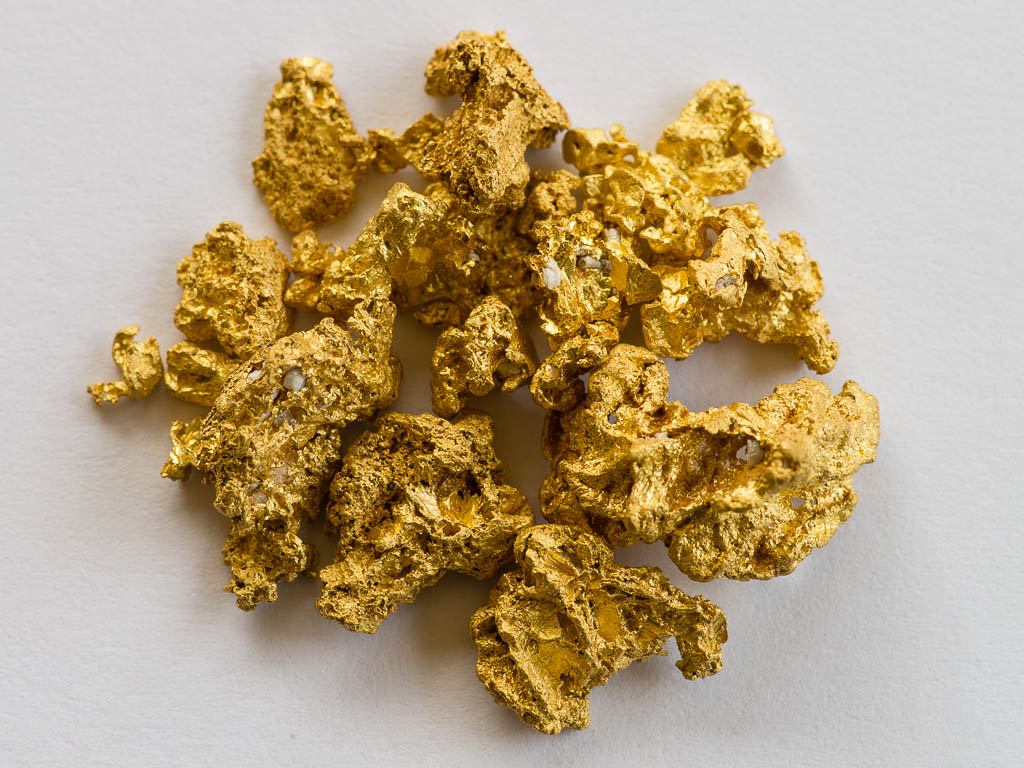
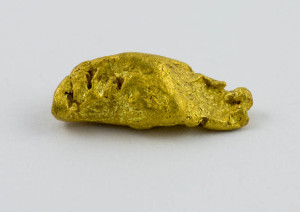
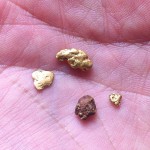
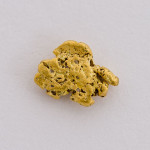

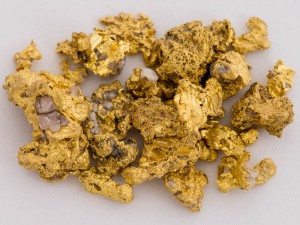
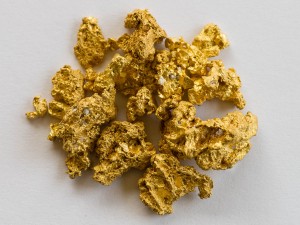
I believe there is a small gold mine for sale in NE Tasmania that has a 30tph process plant. Would you be aware of which one it could be and would you be able to supply any contact details of current owners
Hi Roland,
I believe that one of the Back Creek leases is for sale, maybe 48M/1989. Mineral Resources Tasmania have a page with the lease owner details here.